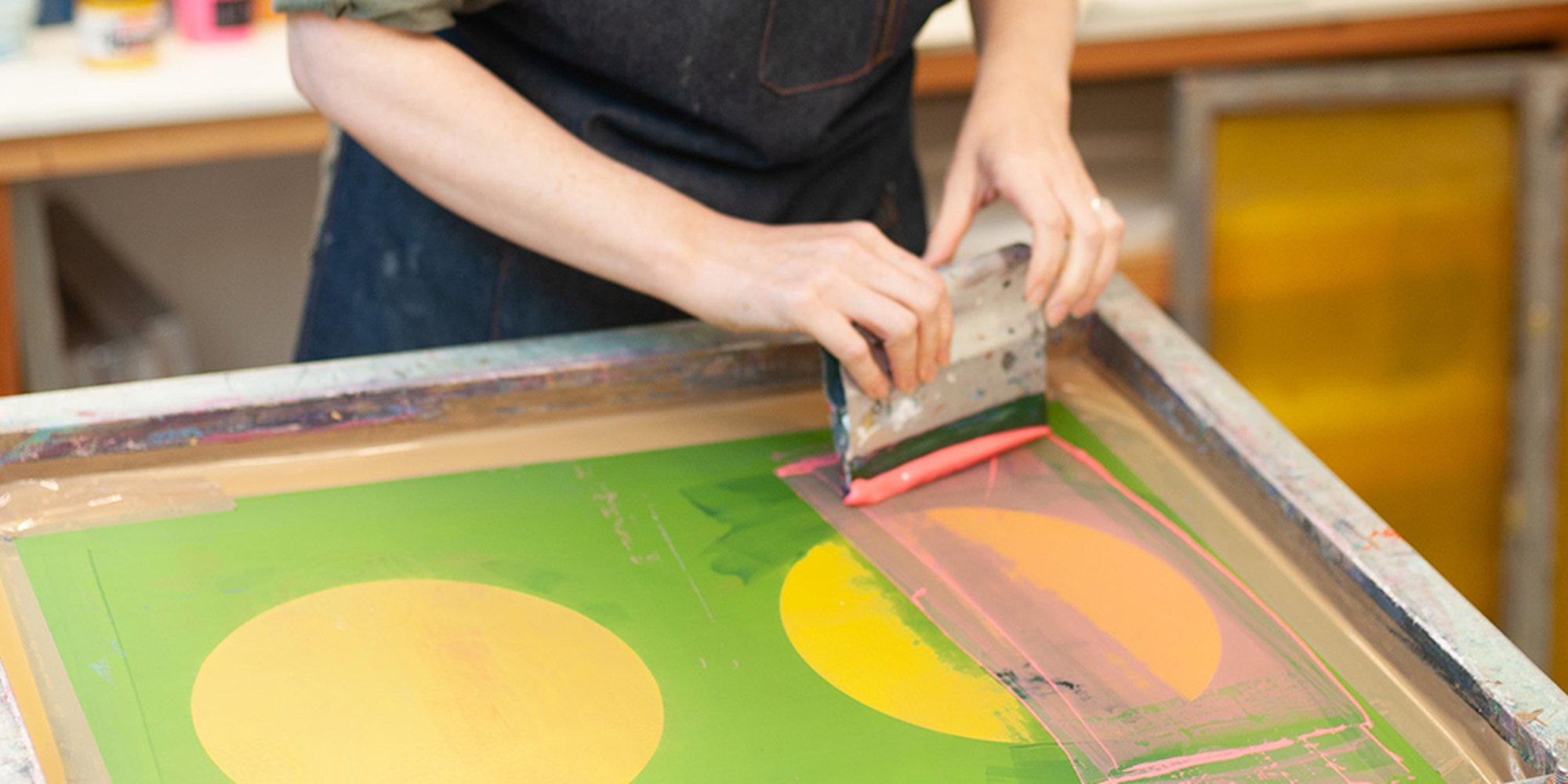The Essential Overview to Recognizing Screen Printing and Its Versatile Utilizes
Screen printing has a rich background that dates back to ancient times, advancing right into an innovative technique made use of across different industries today. This guide discovers the complexities of the screen printing process, detailing its applications in style, home, and advertising and marketing style - 10:9 Design near me. Understanding these basics can open up innovative potential for both artistic and business jobs. The complying with areas will certainly disclose essential tips and strategies to enhance one's screen printing undertakings
The History of Screen Printing
Although screen printing has origins that map back centuries, its evolution mirrors the technological and artistic developments of different societies. Stemming in ancient China, the method was initially made use of for embellishing fabrics and later infect Japan, where it ended up being integral to Ukiyo-e woodblock printing. The approach moved to Europe in the 18th century, where it obtained popularity among artisans and business printers. The creation of photo solution in the 20th century changed screen printing, enabling even more intricate designs and better efficiency. Artists like Andy Warhol even more propelled its popularity, using the tool to produce legendary works that blended commercialism and art. By the late 20th century, screen printing had established itself as a functional technique, utilized in vogue, advertising, and fine art. Today, it continues to progress, integrating digital innovation and expanding its applications across various markets.
The Screen Printing Process Explained
Screen printing changes creative visions into concrete designs with a collection of specific actions. Initially, an image is developed and afterwards moved onto a screen, generally made from great mesh textile extended over a structure. A light-sensitive solution is related to the screen, which is revealed to light, solidifying in locations not covered by the picture. After rinsing the unhardened solution, a stencil is created.
Next, the screen is put over the substratum, whether it be textile, paper, or an additional product. Ink is then pushed through the open areas of the stencil making use of a squeegee, depositing the style onto the substratum below. This process can be repeated for multiple colors, requiring different displays for each tone. The published thing is cured utilizing warm to ensure the ink sticks properly, resulting in a resilient, dynamic design all set for use.
Types of Screen Printing Techniques

In addition, specialized strategies, such as discharge screen printing, remove dye from the textile to develop softer prints, while foil screen printing applies metallic foil to achieve a shiny surface (10:9 Design LLC Company). Each strategy uses distinct qualities, dealing with numerous innovative requirements and production ranges, inevitably broadening the possibilities within the screen printing domain name
Applications of Screen Printing in Various Industries

Additionally, the signs and advertising industries use screen printing for producing captivating display screens and banners. This technique enables for vibrant colors and intricate styles that record focus. In electronics, screen printing is utilized for using conductive inks to circuit boards, vital for part connections. The home click here to find out more style sector welcomes screen printing to produce distinctive designs on textiles and wall surface art. Generally, screen printing functions as an essential tool across diverse fields, enhancing products with customized and visually attractive graphics.
Tips for Successful Screen Printing Projects
While carrying out a screen printing job, cautious attention to detail can considerably enhance the final outcome. Initially, picking high-quality products is necessary; this consists of the screen, inks, and substratums. Making use of proper mesh counts can affect ink deposition and information resolution. Prep work visit homepage is similarly essential; comprehensive cleaning of displays and appropriate exposure times assure crisp prints.
Next off, precise registration is essential for multi-color prints. Making use of positioning devices can assist achieve precise layering. In addition, testing prints on scrap materials before production helps determine potential concerns without losing resources.

Regularly Asked Inquiries
What Materials Are Best for Screen Printing on Textile?
Cotton and polyester blends are excellent for screen printing on fabric because of their toughness and ink absorption. Furthermore, specialty fabrics like silk or canvas can create special structures and surfaces, enhancing the overall style top quality.
Exactly how Do I Tidy and Maintain Screen Printing Equipment?
To maintain and cleanse screen printing tools, one must routinely clean displays with suitable solvents, check mops for wear, lube relocating components, and shop all products in a completely dry, dust-free atmosphere to lengthen their life-span.
What Are the Environmental Impacts of Screen Printing?
Screen printing can have substantial environmental influences, consisting of chemical waste from inks and solvents, water use throughout cleansing processes, and energy intake. Eco-friendly materials and lasting methods are essential for reducing these negative impacts.
Can Screen Printing Be Done in the house Properly?
Screen printing can be successfully done at home with the best materials and strategies. Hobbyists can create top quality prints, though success relies on their skill level, tools, and understanding of the process included.
What Are the Costs Linked With Beginning a Display Printing Organization?

Starting a screen printing service involves expenses for devices, products, and work area. First expenditures commonly range from a few hundred to several thousand dollars, depending upon the scale, quality of equipment, and preferred production capability.
Screen printing has a rich history that dates back to old times, evolving right into an advanced method used across different markets today. Another strategy, rotating screen printing, employs cylindrical displays, you can try here assisting in constant printing on material rolls, thereby improving effectiveness for large-scale productions. In addition, specialty methods, such as discharge screen printing, get rid of color from the textile to create softer prints, while aluminum foil screen printing applies metal aluminum foil to accomplish a glossy coating. In the style sector, screen printing is commonly used to develop vibrant designs on clothing, making it possible for brands to showcase their distinct designs. Cotton and polyester blends are perfect for screen printing on fabric due to their toughness and ink absorption.